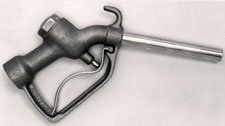Says Soaring Costs Have Crippled US Economy, Environmental
Investments
The Air Transport Association of America (ATA), lobbying group
for the nation's leading airlines, testified Wednesday before the
Senate Committee on Commerce, Science and Transportation to outline
its continued, proactive efforts to further reduce the industry's
greenhouse gas (GHG) emissions while identifying the severe
economic consequences of the current "fuel price crisis."

ATA Executive Vice President and Chief Operating Officer John M.
Meenan presented statistics demonstrating the airline industry
represents just two percent of all domestic GHG emissions, as
compared to 25 percent for the balance of the transportation
sector. He testified that the investments the airlines have made
that have resulted in the industry's outstanding environmental
track record are being threatened by the historically high cost of
jet fuel.
Meenan urged Congress to craft policies that will help solve the
problem, pointing out the severe consequences of inaction.
Meenan told the committee that the industry continues to improve
fuel efficiency, while also reducing its GHG output despite the
high costs of jet fuel. Largely through use of more fuel-efficient
aircraft that have come available in recent years, US airlines
improved fuel efficiency by 110 percent between 1978 and 2007,
resulting in 2.5 billion metric tons of carbon dioxide savings --
roughly equivalent to taking 18.7 million cars off the road each of
those years.
Furthermore, according to ATA, US carriers burned almost 3
percent less fuel in 2007 than in 2000, but carried 20 percent more
passengers and cargo on a revenue ton mile basis.
According to ATA, fuel prices now average 30 to 50 percent of
airline operating expenses, costing $41.2 billion in 2007. Those
costs are projected to grow to $62 billion in 2008. These costs
significantly threaten the US airline industry's growth and ability
to invest in fuel efficiency improvements, ATA says... a sign of
dire consequences for the United States.
 "The nation's airlines expect to
lose in the range of $10 billion this year -- a loss on par with
the worst year in this industry's history," Meenan said. "High fuel
prices are the sole reason."
"The nation's airlines expect to
lose in the range of $10 billion this year -- a loss on par with
the worst year in this industry's history," Meenan said. "High fuel
prices are the sole reason."
In addition to its fuel efficiency improvements, statistics show
that the growth of the US economy is strongly influenced by the
growth of the commercial aviation industry. Annually, the
commercial aviation industry drives $1.1 trillion in economic
activity, contributing 5.2 percent of US gross economic output. The
Bureau of Transportation Statistics recently assessed that in 2006,
5.3 percent of the total value of international merchandise trade
was shipped by air and that air shipments accounted for 32.4
percent of the value of all exports, more than any other
transportation sector.
"This nation's economy is inextricably linked to the viability
of its air transportation system," Meenan said. "If the airlines
continue to spiral downward, so will the economy," said Meenan.
"Aviation contributes $690 billion to the US GDP -- that's 10
million new jobs.
"Unlike the temporary revenue hits from 9/11 and other one-time
demand shocks, the airlines now are facing a massive structural
cost increase," he added. "Not even Chapter 11 can lower the price
of fuel. More than 14,000 airline jobs have been cut so far this
year, and that is just the tip of the iceberg. Scores of
communities stand to lose all scheduled air service by early next
year. More airlines -- in addition to the nine that have already
filed for bankruptcy or stopped operating -- may simply shut
down."
 Airbus Racer Helicopter Demonstrator First Flight Part of Clean Sky 2 Initiative
Airbus Racer Helicopter Demonstrator First Flight Part of Clean Sky 2 Initiative Diamond's Electric DA40 Finds Fans at Dübendorf
Diamond's Electric DA40 Finds Fans at Dübendorf ANN's Daily Aero-Term (04.23.24): Line Up And Wait (LUAW)
ANN's Daily Aero-Term (04.23.24): Line Up And Wait (LUAW) NTSB Final Report: Extra Flugzeugbau GMBH EA300/L
NTSB Final Report: Extra Flugzeugbau GMBH EA300/L Classic Aero-TV: 'Never Give Up' - Advice From Two of FedEx's Female Captains
Classic Aero-TV: 'Never Give Up' - Advice From Two of FedEx's Female Captains




